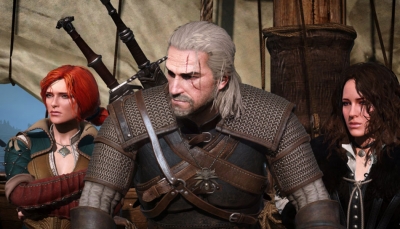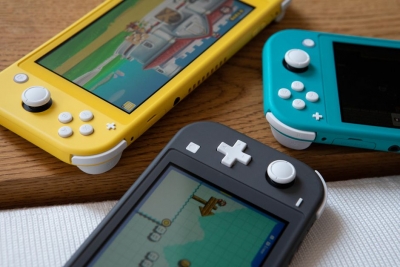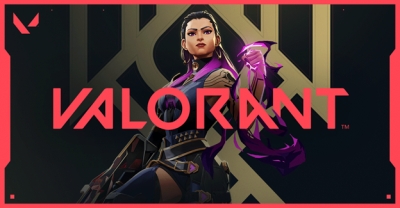School is a place where one’s childhood with games and irresponsibility stops. In contrast to the old opinion above, scientists prove that games can be a part of education. Gone are the days with chalk and blackboards and printed books. Game learning is around the corner, and nothing can stop it from invading modern education.
Why is gamified experience a godsend from technologists? Check the article from our experts below.
Games Build a Character
No, not that character in Dota you're playing for. ‘Character’ is one’s collection of personal traits. In fact, a game can teach a student things a teacher failed to.
There is even an organization called ‘Games+Learning+Society.’ It has proved that games teach students non-cognitive skills like discipline and patience. Sure, you’ll need those skills later while searching for papers writing service with PaperWriter once you’re a college newbie with tons of essays to write.
Which character traits can games build in a student?
- Multiplayer online games teach collaboration with other players and teamwork. Obviously, you need superb cooperation with your co-players to beat the opposite team;
- As it has been said earlier, games teach patience and discipline. To win the battle and get to a higher level, one must build enough diligence and perseverance;
- Games raise critical thinkers. Gamified experience with puzzles and problems ensures that players use their best logic and reasoning;
- Playing games develops risk-taking. Unfortunately, traditional education does not teach students how to make decisions. Meanwhile, introducing students to games ironically puts them into the real world with risks and dangers.
In the end, gamified experience motivates students, especially younger learners, to study. With better motivation comes enthusiasm. And with enthusiasm, a teacher gets a well-disciplined and creative learner.
Few More Facts About Gamified Studying
- Scientists hope that gaming can contribute to the treatment of ADHD and dyslexia;
- Children read gamified texts faster than usual texts;
- Games improve students’ cognitive skills like memory and logic;
- Gamified studying adds motivation to younger learners.
Games Are a Part of Social and Environmental Learning
Games don’t distract students from the problems around them if a teacher chooses proper games. One of the latest games used in education is ‘March Mammal Madness.’ The game teaches players about biodiversity, environmental problems, and endangered species. A great tool for teaching Environmental studies, right? The best thing about March Mammal Madness is that it isn’t boring. Hence, an educational game can be funny and effective at the same time.
Students can choose from the already developed games as well. The amazing ‘Stardew Valley’ will teach students about conserving nature. It will tell the player about how society works and why collaboration is important. For instance, a player is allowed to fish in the game’s waters. However, the amount of the fish is limited, yet the player is asked to respect the waters.
Games Teach Economics and Entrepreneurship Skills
Remember those tedious problems you had to solve as a student during Economics classes? We all know how numbers and diagrams kill one’s desire to study. Whether you’re a school or college student, check the games you can play for a better educational experience. They will build your financial skills and add to your ‘money’ knowledge.
Virtonomics
This game has already become a part of the educational curriculum in many schools and colleges. This multiplayer online game teaches players how markets work. In a fiercely competitive environment, you’re given a task to build a successful business.
In this open-end game, you can play forever. The best feature is that you can choose any market you like to compete in.
Capitalism
Obviously, the game simulates capitalism at raw. Most players start with a large amount of money to build the greatest corporation ever. Sure, you can start from the bottom without a penny, but your marketing chances will be extremely low. Just like in real life. Again, the game shows what ineffective system capitalism is.
Civilization
An astonishingly famous game which won’t leave any player indifferent to it. In this game, your goal is to build the greatest civilization ever. You start from scratch (call it the prehistoric period) and build a well-industrialized realm. Whether you choose militarism or technology privilege, the results will differ. While playing the game, a student learns the meaning of economics and politics.
Sure, students can engage in Economics, Politics, and Environmental Studies. But they can do the same with other subjects like History, Math, or Foreign Languages.
Learning History is a Gamified Experience
All those history books are slowly disappearing into history (pun intended). Most of the history studying is a set of dates, names, and numbers. Sure, a History class will put anyone to sleep if managed badly. Add it to students’ laziness when it comes to self-discipline, and you get the picture.
How can games change one’s perception of History classes?
- Games ensure students use their imagination. One must imagine how prehistoric times looked or what clothes medieval kings wore. The talented 3D artists have already solved this problem. Most modern games have stunningly looking characters and mesmerizing backgrounds;
- Games are interactive. This is their main difference from books and other learning materials. Games demand the player’s interactions instead of passively giving knowledge. A player is supposed to make decisions and use their critical thinking skills;
- A player can try various roles. For instance, they can play for medieval kings and participate in battles. This experience shows how history can be virtually recreated.
Final Thoughts
Gamified experience is gradually turning into an irreplaceable part of learning. Instead of keeping students away from gleaming screens, we can change the experience. Modern educators have all resources to create amazing games that will serve as an educational tool. This gamified learning will spark students’ excitement for studying.
Now you know why playing games is not as bad as it seems. We hope the article was helpful to you. Good luck!






